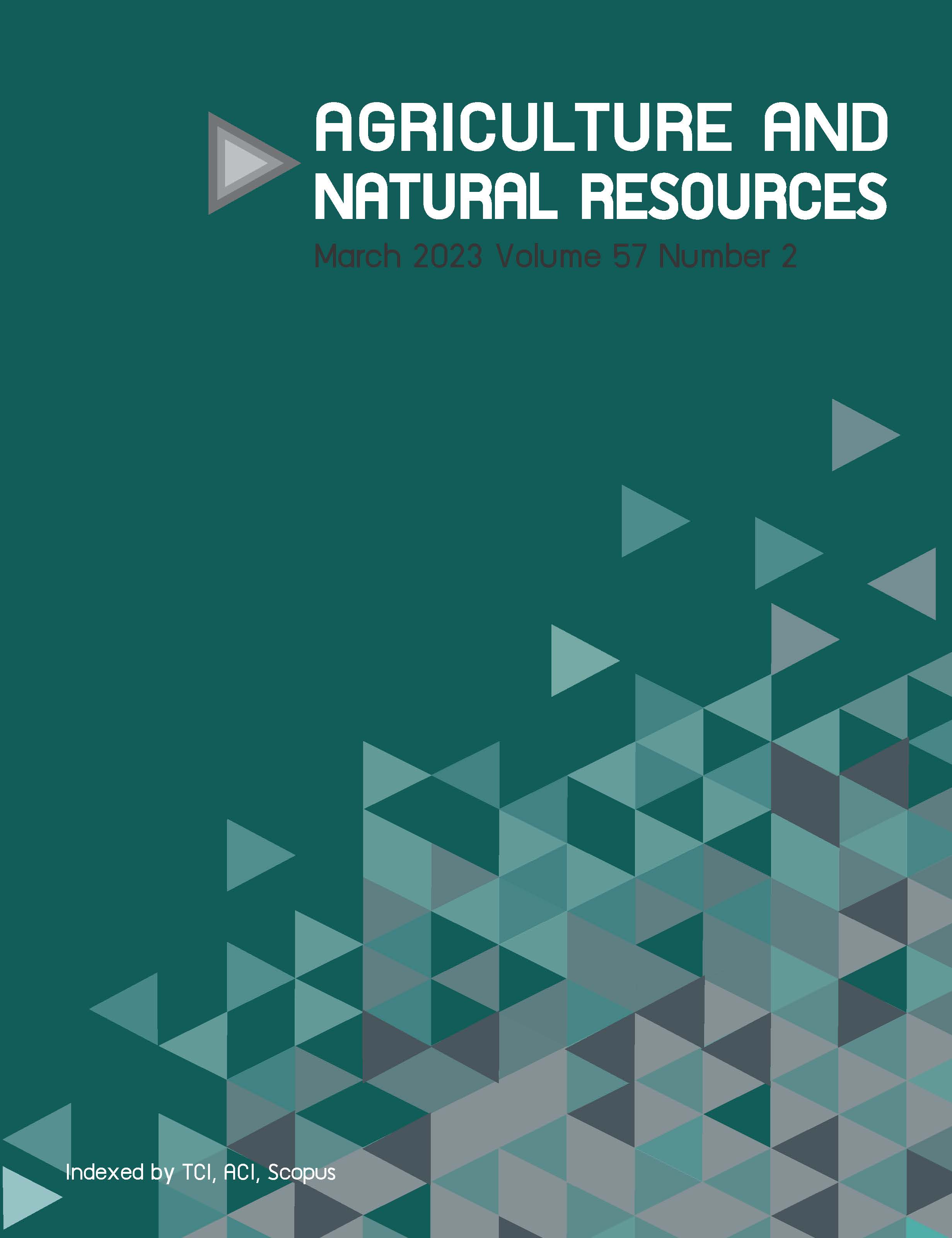Investigation of biological activity and identification of culturable insect-derived Streptomyces strains from Cossus chloratus
Keywords:
Actinobacteria, Biological activity, Cossus chloratus, Insect, StreptomycesAbstract
Importance of the work: Insects are interesting sources of various bioactive-producing actinomycetes that guide new metabolite discovery.
Objectives: To investigate the biological activity and identify the insect-derived actinomycete strains isolated from Cossus chloratus.
Materials & Methods: In total, 20 actinomycete strains were isolated from C. chloratus collected from Chanthaburi province, Thailand. Taxonomic studies used both phenotypic and genotypic data. Crude ethyl acetate extracts were assayed for biological activity that comprised antibacterial, antifungal, antimalarial and anticancer activities.
Results: Based on the phenotypic and genotypic characteristics, insect-derived actinomycetes were identified to belong to the genus Streptomyces and categorized into nine groups (I−IX) closest to S. drozdowiczii, S. xylanilyticus, S. kunmingensis, S. daghestanicus, S. cavourensis, S. badius, S. parvulus, S. flavofungini and S. diacarni. The insect-derived Streptomyces strains CoC1-5 and CoC1-10 inhibited Bacillus cereus with a MIC of 12.50 μg/mL. The strains CoC2-2, CoC2-4 and CoC2-13 exhibited moderate anti-Mycobacterium tuberculosis activity, with MICs of 12.50 μg/mL, 6.25 μg/mL and 25.00 μg/mL, respectively. The strains CoC1-5 and CoC1-21 displayed anti-phytopathogenic Colletotrichum acutatum activity, with MICs of 25.00 μg/mL and 50.00 μg/mL, respectively. The strain CoC1-21 showed strong anti-malarial activity with a MIC of 0.18 μg/mL, while the strains CoC1-5, CoC1-11, CoC1-21 and CoC2-2 exhibited cytotoxicity (Vero, NCI-H187 and McF7) with IC50 values in the range 0.32−17.93 μg/mL.
Main finding: This was the first report detailing the biological activities of Streptomyces strains isolated from the longkong bark-eating caterpillar C. chloratus.
Downloads
Published
How to Cite
Issue
Section
License
Copyright (c) 2023 Kasetsart Universityonline 2452-316X print 2468-1458/Copyright © 2022. This is an open access article under the CC BY-NC-ND license (http://creativecommons.org/licenses/by-nc-nd/4.0/),
production and hosting by Kasetsart University of Research and Development Institute on behalf of Kasetsart University.







